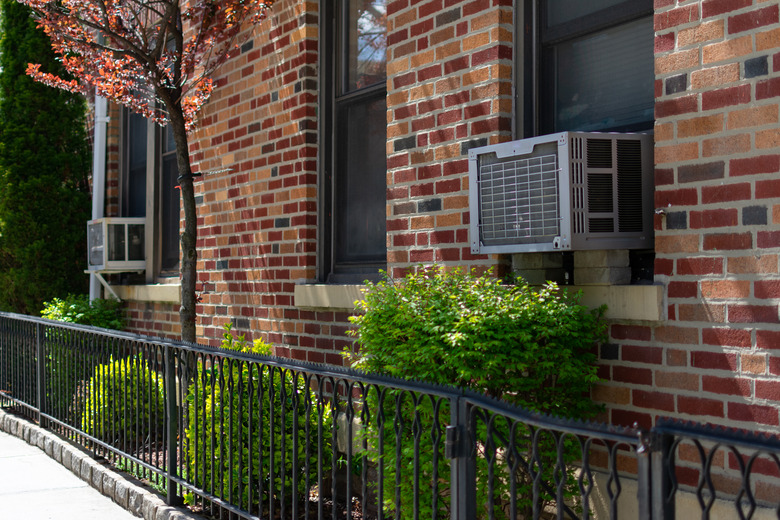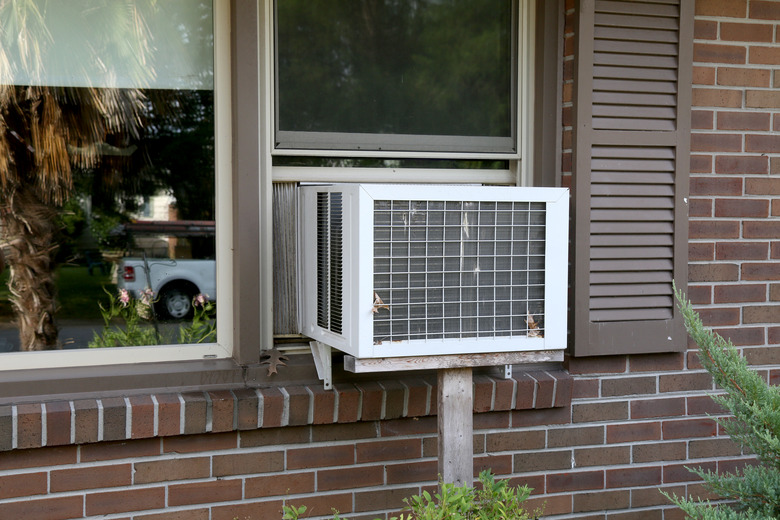Window Air Conditioners: Everything You Need To Know
We may receive a commission on purchases made from links.
Air conditioners come in many shapes and sizes, from central air conditioning units that cool the whole house to ductless minisplit units for single-room cooling to portable A/C units that you can move from room to room. But the familiar window air conditioner is still one of the most popular choices. Unlike a central or minisplit system, a window air conditioner does not require professional installation or supporting HVAC equipment, and unlike a portable unit, it vents hot air outdoors without the need for a dedicated hose. Window air conditioners are affordable, and if you buy one of the correct size, it will keep any room in the house comfortably cool with a minimum energy expenditure.
Window air conditioners are plug-and-play appliances. Once you set one in the window and plug it in, you should have trouble-free cooling for the life of the appliance, provided you supply the proper TLC. No appliance is maintenance-free, however, and a window air conditioner is no exception. When you get to know your window air conditioning system, you'll appreciate the need for the minimal DIY maintenance it requires. Before crossing that bridge, though, it's important to make sure you buy the one that meets your needs.
How a Window Air Conditioner Works
How a Window Air Conditioner Works
All air conditioners are heat exchange units, meaning they draw heat from indoors and expel it into the outside air, and they do this using a refrigeration system similar to the one in, you guessed it, refrigerators. The system consists of two coils — the condenser coil and the evaporator coil — an inert chemical called a refrigerant circulating between them, and a pump called a condenser or compressor.
The job of the condenser (the part of the unit that makes the low rumbling sound when the air conditioner is on), is to pressurize the refrigerant in the condenser coil, turn it into a liquid, and send it toward a small aperture called the expansion valve, which separates the condenser coil from the evaporator coil. When the refrigerant passes through the aperture, it's no longer pressurized, and its concentration is greatly reduced, so it vaporizes, or evaporates.
When something vaporizes, it needs heat energy to help the atoms break the bonds holding them together as a liquid, and the refrigerant draws this heat from the room air, turning the air and the coil cool. When the refrigerant returns to the condenser and enters the condenser coil, it gets pressurized and turned back into a liquid, and in the process does the opposite of what it did when it vaporized: It releases heat outdoors.
Buying a Window Air Conditioner
Buying a Window Air Conditioner
It's important to size a window air conditioner properly because if it's too small, it won't keep the room cool, but if it's too large, it will cycle on and off too frequently (short cycle), reducing its service life. Because an air conditioner draws more power when it switches on, short cycling also wastes energy.
Cooling capacity is measured in British thermal units (BTU), and at a minimum, you need 20 BTU of cooling capacity for every square foot of room space, but there are other things to consider:
- Add 10 percent for sunny rooms, subtract 10 percent for shaded rooms.
- Add 600 BTU for each person who occupies the room over and above the standard occupancy of two persons.
- Add 4,000 BTU if you're cooling a kitchen.
For example, a 200-square-foot sunny room occupied by three people needs a 5,000 BTU unit, which is the smallest available, but increase the room size to 350 square feet, and you'll need an 8,000 BTU unit, and if the room is a kitchen, you'll need a 12,000 BTU unit.
Another important characteristic of an air conditioning unit is its energy efficiency ratio (EER); the higher it is, the more efficient the machine and the cheaper it will be to run. If you stick to units bearing the ENERGY STAR label, you'll be assured of the highest possible EER. Some other features for which to look include an easy-to-access air filter (because you'll have to change it frequently), controls you can understand, a built-in thermostat, and a programmable timer to help save energy.
Window Air Conditioner Installation Tips
Window Air Conditioner Installation Tips
Window air conditioners are designed to sit on the windowsill with the rear portion (containing the condenser and condenser coil) hanging outside, and many units come with brackets or other supports to carry the weight of these heavy components. If the unit you purchase doesn't come with brackets, it's a good idea to buy and install them anyway as extra insurance against tipping and falling, especially during installation. Some communities, such as New York City, require them. A universal bracket is easy to install, requiring no screws or bolts, and you can get a small one for less than $30 and a heavy-duty one for less than $100.
An air conditioner is also a dehumidifier. Moisture condenses out of the air, collects on the cold coil, drips into a pan, and is directed outside by a drain line. To ensure the water actually flows outside, many A/C units have to be installed with a slight tilt in that direction, but some don't because manufacturers have designed them with a built-in tilt. Be sure to check your owner's manual to determine whether you need to tilt the unit during installation.
Most window air conditioners are designed to be installed in single- or double-hung windows, which are those with a bottom sash that slides up and down. They come with flanges to fill the gap between the sides of the machine and window frame, and you close the gap on top by sliding the window down as far as it will go. You can adapt one of these to fit a horizontal sliding window, but it's better to buy one designed for that type of installation.
Maintenance and Energy-Saving Tips
Maintenance and Energy-Saving Tips
Window air conditioner malfunction is most commonly related to a lack of regular maintenance. To ensure optimum cooling capacity and air quality, window A/C units need good airflow around both coils, and it's the job of the blower and condenser fan to supply it, but they need help from you. Clean or change the air filter at the manufacturer-recommended interval (usually once a month) and keep the grille on the outdoor part of the unit free of leaves and other debris. The internal components also need periodic cleaning with a brush or soap and water to keep them free of dust buildup.
If you see water dripping inside the house, it's usually due to a clogged drain line (assuming the unit was properly installed), and your owner's manual should supply instructions for how to access and clean it. While you're at it, it's also a good idea to clean the drain pan with a bleach solution to prevent mold from growing and circulating in the indoor air.
When you purchase an ENERGY STAR model that's properly sized for the room, you're already on the way to maximum efficiency, but there are a couple of things you can do to get even closer. One is to use ceiling fans to prevent hot air from escaping the cooling clutches of the air conditioner by collecting near the ceiling. Another energy-saving tactic is to set the timer on the air conditioner so that it comes on automatically only when you need it and shuts itself off otherwise. Finally, be sure to leave other doors and windows closed so you don't waste cool air.


